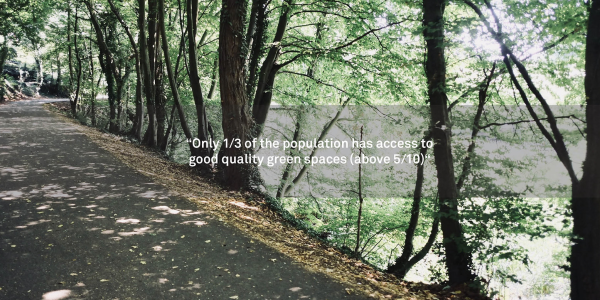Ahmed Z. Khan1, Frank Canters2, Philip Stessens1, Amy Philips2
4-year collaboration between ULB1, VUB2, environment.brussels and Bouwmeester Maitre Architecte
CO-PRODUCTION: The project is a team effort with local stakeholders, citizens, and policymakers so the outcomes have a wide societal support base.
NATURE-BASED: Natural processes generate multiple benefits, which are at the core of this project.
SCENARIOS: Based on our research and knowledge of local field experts, we create alternative scenarios for a more resilient Brussels
URBAN REGENERATION: Strategic and inclusive urban regeneration can reduce the inequalities of access to nature related benefits and foster an equitable and resilient urban environment.
CONTEXT
With their abundance of work opportunities, cultural diversity, and amenities, it is no wonder that people choose to live in cities. While the resultant growth may mean cities can flourish, it also places pressure on urban land and infrastructure. This pressure combined with the threats of climate change mean cities may be at risk of flooding, intense heat waves, and unhealthy levels of pollution, all of which pose serious health threats.
Green spaces can act as places of refuge, both from an environmental (heat, pollution,…) and social point of view (stress, loneliness,…). These spaces also improve the quality of the urban environment – filtering the air and water, producing a cooling effect, and buffering noise. In other words, green spaces provide ecosystem services, or ways in which nature benefits people. Benefits in the form of regulation of ecosystem processes like water retention and pollination are regulating ecosystem services, while the intangible yet significant cultural ecosystem services include the aesthetic, educational, spiritual, and touristic properties of ecosystems.
While urban green spaces do provide inhabitants important ecosystem services, access to green space is unequally available to all urban dwellers. Research in Brussels found a lack of access to certain types of green space (residential and play green, city and metropolitan green) for more than 50% of the population. Findings from the same study suggest that two-thirds of the Brussels population does not have access to high-quality green spaces.
In recent years, ecosystem service studies have come to the forefront of research as a means of understanding the crucial relationships between ecosystems and human well-being. Understanding ecosystem services also enables us to recognise which natural processes benefit the urban environment and how. Solutions that are inspired and supported by nature are called nature-based solutions (NBS). Implementation of nature-based solutions in urban design can help cities build resilience.
FOCUS AREAS
PLAN NATURE: Two plans are presently underway in the Brussels Capital Region. The first, “Plan Nature”, is implemented by Bruxelles Environnement/Leefmilieu Brussel, and aims to improve access to nature by inhabitants, to facilitate collaboration between green space management stakeholders, and to build multifunctional green space, or spaces that offer a wide range of ecosystem services to support both biodiversity and the city as a whole.
PLAN CANAL: As its name suggests, the second plan, “Plan Canal”, focuses on the Canal Zone of Brussels. The initiative is guided by Bouwmeester Maitre Architecte (bMa) and aims to stimulate city centre economic activity and local job creation, to create housing to keep up with population growth, and to build public space to serve as a platform for engagement and unification.
The Canal Zone has historically been dominated by industry and commercial activity. The Canal was constructed in 1477 to connect Brussels to Antwerp, and served as a port for trade of tapestries and other fabrics. This construction significantly reduced the time taken to transport goods. Warehouses, shops, hotels, and factories were built along the Canal to support this lucrative port. Growth and expansion of the Canal continued into the 20th century, until Brussels experienced a downturn in its population from the 1970s as the middle and upper classes escaped the city centre and moved to the outskirts. Deindustrialisation transformed the Canal area, where industry was gradually replaced by logistics companies.
As a result of deindustrialisation, brownfields have emerged and buildings have deteriorated along the Canal. There has since been a push to spur development of industrialised zones, which has resulted in some revitalisation and repopulation of portions of the Canal. However, other areas still struggle, impacted as well by pressures from the population boom Brussels has experienced in recent years.
CO-NATURE
The purpose of the CO-NATURE project is to explore the potential of incorporating cultural and regulating ecosystem services and NBS urban design into development plans for Brussels. The objectives of this project are threefold:
First, to identify which NBS could potentially be implemented in Brussels and where these implementations would be most beneficial.
Second, to understand how green spaces are used and valued or, in other words, to identify the beneficial cultural ecosystem services present and lacking in Brussels green spaces.
Third, to develop scenarios with experts and citizens to ultimately inform policies that could be used to guide nature-based urban design.

Funding agency: INNOVIRIS.





